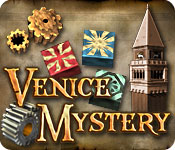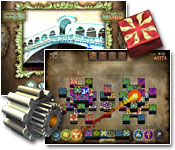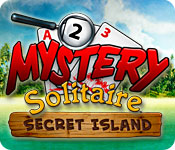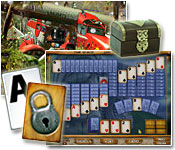Archive for the ‘mahjong’ Category
Review: Venice Mystery
Venice Mystery can be best described with these three words: Mahjong on speed. That’s pretty much it. You have your typical Mahjong solitaire game field, with tiles piled on top of one another, and a little bit of something new: a “your tiles” area where you get to activate a tile to match with what’s in the game field. Along with 6 power-ups, key stones that locks up parts of the board, and a really cool painting tile matching mini-game, plus a very unforgiving clock (especially in later levels), Venice Mystery can be a very addictive, fast and furious Mahjong game.
Venice is going to sink, and you’re the one who has to save it. In order to save it, you have to both do some tile matching, as well as decipher some scrolls. As usual, we find ourselves at a loss as to what the gameplay has to do with the story. No matter, as the gameplay is addictive enough that we ignore the story anyhow.
What makes this Mahjong game different? The combo system. You can click on one tile in your row, then match it to as many tiles as you can find that isn’t under other tiles (yes, even if it’s boxed in on all sides, you can still get at it.) You have to do it fast enough that the game doesn’t consider your combo over. It’s almost like target practice – scan the board, scan the row, pick up a tile, and bam! bam! bam! bam bam bam! Next! Venice Mystery have more in common with whack-a-mole than your normal Mahjong Solitaire.
Venice Mystery also does not have the usual we’re-stuck puzzle element of Mahjong play. Typical Mahjong games may only have a fixed number of solutions, and once you mess up at a certain point you’re doomed. Venice Mystery will randomize a tile back into your row every time you make a move, and you will be able to make a match with at least one of them. You cannot get a “no more moves” lost condition; instead, it’s replaced with the “time up” lost condition.
There is a mini-game that pops up at the end of every chapter, and it’s actually quite interesting. Circles will be copied out from a painting, and they will be rotated. It’s your job to find out what part of the painting the circle came from. It’s a nice little object hunt for those of us who enjoy these things. The other mini-game, where you enter roman numerals into the clock tower, feels more like a make-work project than a game.
The 6 power-ups are very typical of this genre – swap, shuffle, destroy. There’s nothing really new here to talk about. What really irks me is the presentation of them though. In order to introduce a power-up properly, there should be a series of levels geared towards needing that power-up. Venice Mystery seem to just throw them your way and expect you to use them, even though there is no need to use most of them until much later in the game.
With that previous sentence, I’ve described the entire game. Venice Mystery is like that. Within the first hour, you’re introduced to every key aspect of the game. After that, there isn’t anything new to discover aside from different paintings, more colors, and more patterns. So once you’re hooked and buys the game, you’ll be playing the same thing for the next 5 hours.
Herein lies the problems of this beautiful game – it dazzles. It dazzles also because it is so fast. Unlike other Mahjong game that introduces a new power-up every chapter, this one gives it to you all at once. So at first, everyone is confused by the proliferation of rules, then once you get used to them, there’s not much else that is new to discover.
Venice Mystery features beautifully pre-rendered sprites and a well-drawn interface, along with a pretty soothing background track and appropriately clicky sound effects. On the outset there is a whole lot of playability and razzle dazzle, but beneath that veneer of glitter, there isn’t much else to keep you interested – after a while it just feels as if there is no need to keep playing because the game does not seem to reward you for any of it. It’s still a lot of fun for an hour or two, but it may feel pretty boring even for those of us who actually like Mahjong.
Hints: Venice Mystery
- To make Combos, click on a tile in the bottom row, then click on multiple tiles in the play field. Remember, the tiles have to be the exact pattern and color – and some look pretty close!
- The key word is speed. If you don’t click on them fast enough, your tile disappears and the game considers your combo complete.
- Try to make combos every turn. The clock can be very unforgiving.
- In the painting mini-game, remember that clicking on a circle rotates it.
- The Ankh is the “death” ankh, not the life ankh. Confusing eh? Using an ankh on a tile in the play field DESTROYS all tiles on the field of the same color and pattern, despite their position.
- A joker is your most valuable asset. You can use it to make combos with tiles that you just can’t seem to get rid of – all of those odd ones. The number on the joker indicates how many tiles you can destroy in one go.
- The blue power-up with 3 tiles on it shuffles YOUR deck. It does not shuffle the tiles on the play field – just gives you new tiles in your row.
- The orange power-up with flames in the middle is like a cannon. It destroys single tiles.
- The green power-up with arrows on them can swap two tiles in your playfield.
- Using sixth sense reveals all the keys and power-ups on the field.
- Transform can be very useful as a power-up. It changes all instances of a pattern-color tile in the play field to something you have on hand, so you can match it right away.
- The clock tower mini-game: It doesn’t matter what order you use the numbers in as long as you use them all. It’s really more work than play.
- If Roman numerals confuse you, mouse-over a number in the clock and its conventional counterpart will appear.
- Secret levels (after clock towers) are a lot harder than the normal levels, so if you want to skip them for now, just click on “map” when you have a choice to go to the clock tower.
Review: Mystery Solitaire – Secret Island
Mystery Solitaire is a card solitaire game, or so it seems. It plays like Mahjong, and it has all the elements of a mahjong game aside from the stack of cards at the bottom of the puzzle screen. Even the power-ups such as the magnet and key/lock are current mahjong standbys.
For a set number of stages of solitaire you complete, you will get to do one object hunting scene. There are 12 in all, and in each you are only required to find 5 items. So the object hunting part, while well done (the placement and hiding is actually better in this game than say, in Abra Academy or Hide and Secret), is painfully short. It’s also wholly optional since there are unlimited hints.
As for the core gameplay itself of solitaire, it’s actually pretty good. You get to choose between 3 different symbol sets for the cards – yet another tip off that this is more mahjong than card – and the cards will be placed in a typical mahjong configuration. At one side of the screen there may or may not be a stack of cards and three slots for you to deal those cards into. After that, you just have to match pairs.
When you finish each object hunting scene, you get one map piece. After 12 map pieces you find the secret island and win the game. It’s pretty simple standard casual game fare. If you enjoy mahjong, this is a pretty good one. If you don’t and just want an object hunting game, it’s not bad either, but it just isn’t meant to be that. Because the game features symbols as well as cards, little ones can play it, as there is no time limit. This game does not save mid-level progress.



